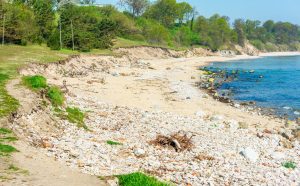VMRC Tidal Wetland Guidelines Finalized

VMRC has adopted revised wetland guidelines that include a preference for living shoreline solutions for eroding shorelines.
On May 25, 2021, the Virginia Marine Resources Commission (VMRC) unanimously adopted revisions to their Tidal Wetland Guidelines. The new guidelines were a critical step in implementing the mandates of the 2020 Virginia General Assembly’s Senate Bill 776, which strengthened VMRC’s goal to protect sensitive shorelines and wetlands by amending the language regulating Virginia’s tidal wetlands (Chapter 13, Title 28.2 of the Code of Virginia).
Wetland Studies and Solutions, Inc. (WSSI) has reviewed the adopted Guidelines, which follow the draft guidelines issued by VMRC earlier this year, and include
- Simplification of the tidal wetlands definition for vegetated and non-vegetated wetlands and
- A requirement to implement living shoreline measures for shoreline management projects in almost all instances.
For a more detailed review of the changes, please see our March 24, 2021 Field Notes review of the draft guidelines.
The VMRC has also adopted four additional minimum permit standards to address
- the need for local government approval for impacts to the Resource Protection Area;
- the requirement for any proposed tidal wetland use or development project to provide an analysis of onsite data along with scaled drawings to provide shoreline characteristics;
- the incorporation of forecasted landward migration of existing tidal wetland vegetation; and
- the mandatory use of a living shoreline approach to shoreline management unless the best available science demonstrates that it is unsuitable.
If you have questions about the implications for your Virginia projects, please contact Mark McElroy or Bob Kerr in our Hampton Roads office, or Christie Blevins in our Gainesville office.
What is a Living Shoreline?
A living shoreline is a means of shoreline protection that incorporates stone, plants, sand, and other structural organic materials (e.g., woody material). This approach is now, by regulation, the preferred approach over “hard” structure, where practicable (e.g., rip rap, construction debris, bulkheads). Research has shown that living shorelines conserve, create or restore natural shoreline habitats and ecosystem services while providing protection from wave energy and sea-level rise. You can learn more about living shorelines on the website for the Virginia Institute of Marine Science.
